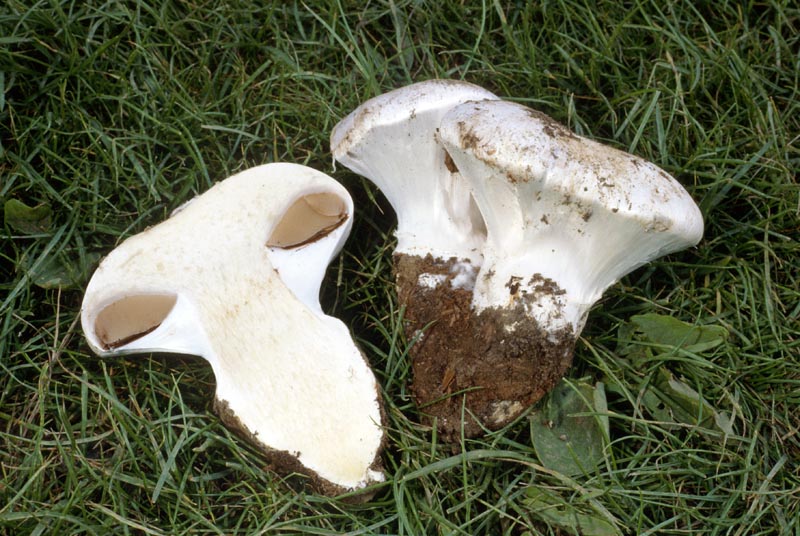Conservation Status: Not of concern
Cortinarius magnivelatus is one of several cotinariuses that develop more or less beneath the soil surface and often remain partially buried at maturity. They very in color and other features but have in common a heavy, membranous, more or less persistent veil; all actively release their spores and give a spore deposit, unlike secotioid fungi such as thaxterogasters. The species with heavy veils apparently have evolved this feature independently, and do not form a natural group. They are found in the mountains of western North America, especially higher elevation dry conifer forests of fir, pine, and spruce. Cortinarius wiebeae is similar in many features, and it remains to be seen if it is a distinct species. C. verrucisporus is somewhat similar but develops stronger yellow colors on the cap and has yellowish flesh. C. saxamontanus is even more strongly yellow to brownish orange, has a light yellow cortina, and yellow-brown to brownish orange gills; its fruitbodies turn wine-red after drying and storage, probably due to the presence of anthraquinone pigments.
Sources: Trudell, Steve and Joe Ammirati. Mushrooms of the Pacific Northwest. Portland, Timber Press, Inc. 2009.
PNW Herbaria: Specimen records of Cortinarius magnivelatus in the Consortium of Pacific Northwest Herbaria database.
CalPhotos: Cortinarius magnivelatus photos.




